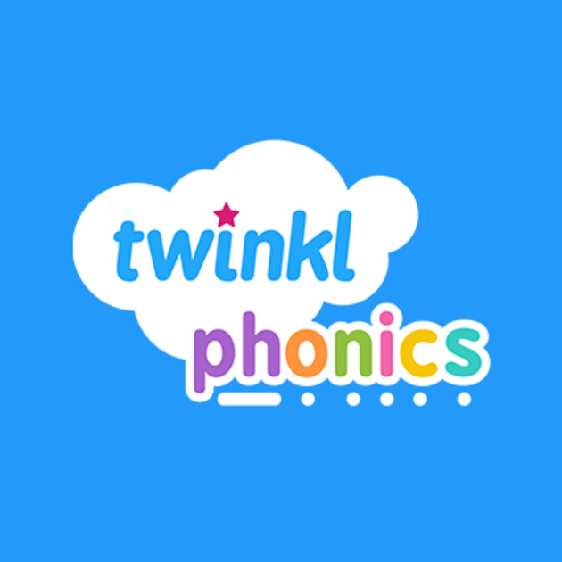Phonics
Teaching of Phonics
At Pottery Primary we ]follow the Twinkl Phonics scheme.

Intent
At Pottery Primary School we intend to ensure all children become successful, fluent readers by the end of Key Stage One and believe this is achievable through a combination of strong, high quality, discrete phonics teaching, combined with a whole language approach that promotes a ‘Reading for Pleasure’ culture.
We intend to do this by:
- Implementing the Twinkl phonics scheme throughout EYFS and KS1, and where needed into KS2.
- Using high quality resources consistently across all classes.
- Creating an environment where phonics is demonstrated and applied throughout their learning.
- Ensuring children are confident with their grapheme, phoneme correspondence knowledge. They can apply segmenting and blending to ensure they are able to read words which they have never come across before.
Implementation
We teach the children as a whole class so that every child is exposed to the phonemes and graphemes which are at the expected level for their age. Children in Reception are taught level 2 up until Christmas. From January they begin working on level 3 and then they spend the second half of the summer term working on level 4. Children in Year 1 begin working on level 5 and children in year 2 begin working on level 6.
Children are taught how to break down words into their individual sounds in order to read and how to segment words into their individual sounds in order to spell them in their writing.
KS2 children who still require phonics input will be taught in very small groups with their peers. Dandelion readers intervention schemes may be used in KS2.
- The National Curriculum statutory statements will be implemented in the Twinkl phonics sequence.
- Staff will use the high quality Twinkl phonics resources throughout phonics to ensure consistency.
- Provide quality first teaching in line with the teaching standards.
- Provide quality examples and demonstrations of how to say each phoneme and apply to words clearly.
- Allow children opportunities to read both real and nonsense words.
All staff
- Use assessment to ensure that all children are learning the phonemes which they need to progress with their reading.
- Delivers high quality phonics lessons using Twinkl phonics resources.
- Demonstrates clearly the pronunciation of phonemes. Allows the children time to apply their phonic skills throughout the school day.
Impact
To measure impact we will ask:
What impact has the implementation had on;
- Standards in phonics screening check for pupils at the end of Year 1 and Year 2.
- Ability to recall and use phonemes with good grapheme, phoneme correspondence.
- Ability to segment and blend confidently with real and nonsense words.
- The ability to apply phonics skills when reading.
- The coverage of phonemes
- The ability to apply their phonics skills and apply to other areas of the curriculum.
A phoneme is mastered when the child is able to read confidently and apply the phoneme in a range of words, unaided. The child should be able to apply their knowledge when blending to read a range of real and nonsense words.
This will be assessed using Twinkl assessment processes and mock screening checks at regular intervals throughout the year.
Year 1 children will take a phonics screening check in June. Parents will be informed of the results with the annual school report.
Expectations
In Reception by the end of Autumn term it is expected that children will have completed phase 2 and be able to segment and blend words containing the phase 2 graphemes.
In Reception by May it is expected that children will have completed phase 3 and be able to segment and blend words containing the phase 2 and phase 3 graphemes.
In Reception by July it is expected that children will have completed phase 4.
In Year 1 it is expected that children will have completed phase 5 by the end of July and are able to segment and blend words for reading and spelling which contain the phase 2, 3, 4 and 5 graphemes.
In Year 2 it is expected that children will have completed phase 6 by the end of July and are able to apply the rules for adding prefixes and suffixes to words.
Phonics Screening Check
"The Year 1 phonics screening check is not a formal test, but a way for teachers to ensure that children are making sufficient progress with their phonics skills to read words and that they are on track to become fluent readers who can enjoy reading for pleasure and for learning."
1. What is the Year 1 phonics screening check?
The phonics screening check is taken individually by all children in Year 1 in England. It is designed to give teachers and parents information on how your child is progressing in phonics. It will help to identify whether your child needs additional support at this stage so that they do not fall behind in this vital early reading skill. The check will consist of 40 words, 20 real and 20 non-real words.
2 .What is in the phonics screening check?
There are two sections in this 40-word check and it assesses phonics skills and knowledge learned through Reception and Year 1. The check usually takes about 10 minutes.
3. What sort of check is it and is it compulsory?
It is a compulsory, school-based check to make sure that your child receives any additional support promptly, should they need it. It is not a stressful situation as the teacher will be well-equipped to listen and understand your child’s level of skills.
There will be a few practice words first to make sure your child understands the activity.
4. What does it check?
It checks that your child can:
- Sound out and blend graphemes in order to read simple words.
- Read phonically decodable one-syllable and two-syllable words, e.g. cat, sand, windmill.
- Read a selection of nonsense words (also known as 'alien words')
5. What are nonsense words and why are they included?
These are words that are phonically decodable but are not actual words with an associated meaning e.g. brip, snorb. These words are included in the check specifically to assess whether your child can decode a word using phonics skills and not their memory.
The nonsense words will be shown to your child with a picture of a monster and they will be asked to tell their teacher what sort of monster it is by reading the word. This not only makes the check a bit more fun, but provides the children with a context for the nonsense word which is independent from any existing vocabulary they may have. Crucially, it does not provide any clues, so your child just has to be able to decode it. Children generally find nonsense amusing so they will probably enjoy reading these words.
6. What happens to the results?
The school will report your child’s results to you by the end of the summer term as well as to the local authority, but the results won’t be published in a league table as with SATs. If you have any concerns, do talk to your teacher about this in a parents’ meeting or after school.
7. What should I do if my child is struggling to decode a word?
- Say each sound in the word from left to right.
- Blend the sounds by pointing to each letter, i.e. /b/ in bat, or letter group, i.e. /igh/ in sigh, as you say the sound, then run your finger under the whole word as you say it. We also use sound buttons to make it clear which letters are working together.
- Talk about the meaning if your child does not understand the word they have read.
- Work at your child’s pace.
- Always be positive and give lots of praise and encouragement.
Useful Websites
Phonics play - there are several free games to play that will help your child with their blending and segmenting.
www.phonicsplay.co.uk/Phase3Menu.htm
Phonics Games - A variety of different interactive games
www.ictgames.com/mobilePage/forestPhonics/index.html
